
The Emberá-Wounaan comarca is one of the autonomous Native area. It was created in 1983 from parts of the Darien forest as Chepigana and Pinogana. The capital is Unión Chocó. The region has 4383.50 km². Population is 9544 souls (2010), and most are Emberá or Wounaan. There are 40 communities.

These 2 ethnies are very similar: they share the same culture, the same kind of home, the same traditions. Language is different: the Embera for the people of the same name and the Woun meu or Maach meu for the Wounaans, in both languages it means “man or people“.

During the colonial period, these aborigines, both the Emberá and the Wounaan ethnics groups, were known by other names, such as: Citares, Zirambiraes, Citabiraes, Chocoes and others. They entered the isthmus around the 18th century from the Chocó region of Colombia. The latest studies indicate that before the arrival of Christopher Columbus they probably occupied Brazilian lands.
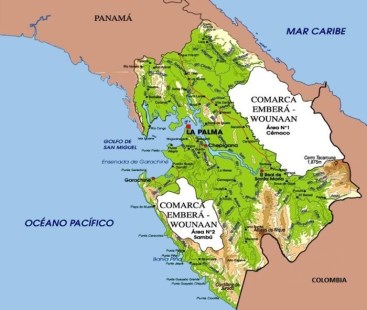
Living along the several rivers throughout the Darien primary forest, these people are isolated from civilization and have few access to modern medecine. They live of hunting, fishing, fruit and roots picking. And a little bit of tourism (handcraft).
The major problem is the illegal cut of the trees to be shipped to China: Darien forest hosts many precious woods! This robbery also affect the animals and the Native as they have a great respect for mother nature. Also note that Natives do not receive any money or compensation for the cut on their lands!
Scattered along the banks of the many rivers that cross the Darien, far from the comforts and troubles of civilization, they seem to be in comfortable harmony with their surroundings. Proud, peaceful, honest, but distrustful of strangers; they live a daily existence in which there is little financial pressure. Ignoring government procedures and regulations, they generally make their own laws. They are usually related to the most infamous stories of indigenous people in the Darien, possibly due to their wild appearance, which has ignited the imagination of myth-makers.
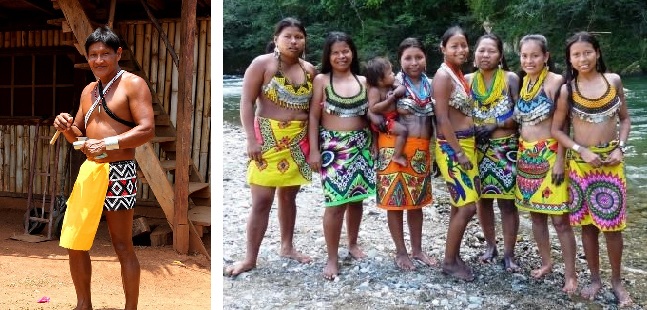
The men wear a loincloth they call guayuco (Andia in their dialect) and a handmade skirt originally made with chaquiras (used on special occasions) called amburäco, but when they go to the towns they wear shirts and pants, although currently men wear T-shirts and modern pants. The women use paruma fabrics and wrap their hips to the knees and necklaces around the neck woven by themselves called chaquiras, and their bodies are painted jagua (natural paint produced by a plant).
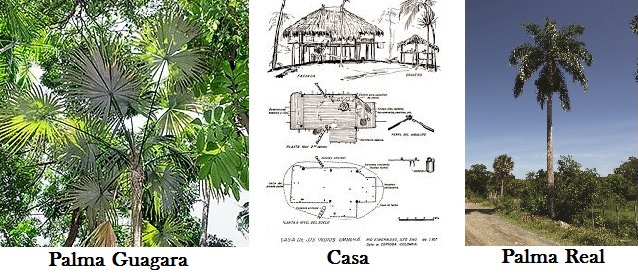
Their houses are built on pillars, to protect them from the floods of the rivers (they are very resistant). The roof is conical, it is made using the leaves of the plant known as guagara, although they also use the leaves of the royal palm, but they also use other styles. The floor is made of palm bark called jira. They sleep on mats that they make from tree bark.
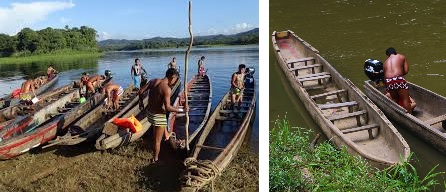
The Emberá-Wounaan are a people who live and work around rivers. They build their canoes (pirogues) with espavé wood, hawthorn cedar and yellow pine. The indigenous people are excellent goldsmiths and wood carvers. The women make basketry articles; baskets, mats and ornaments.
They practice gardening, fishing and to a lesser extent hunting and gathering. They practice agriculture: banana, rice, corn, tubers, and others, completing their diet with what is produced by fishing, hunting and gathering.
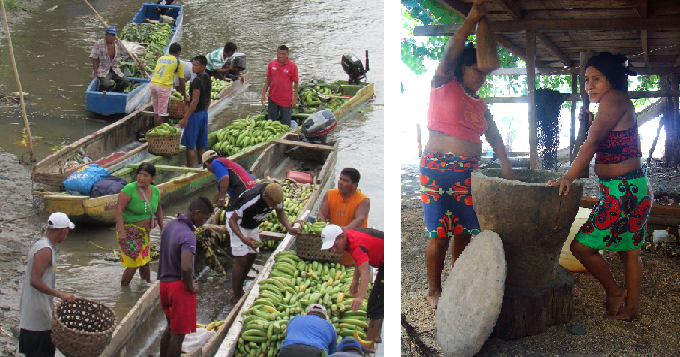
The most spectacular has to be the vegetable ivory: the palm nut called Tagua that is the size of an egg and is carved. The appearance and the color, but also the hardness, are reminiscent of ivory.

In recent years, with the increase in tourism, its crafts (wood carvings and tagua seeds, beads, basketry) have become an important resource for its economy.

They are monogamous, in general marriages are endogamous. The social structure is based on extended families that share jobs and ceremonies. The jaibaná (shamans) are in charge of traditional medicine and rituals.

Related Programs